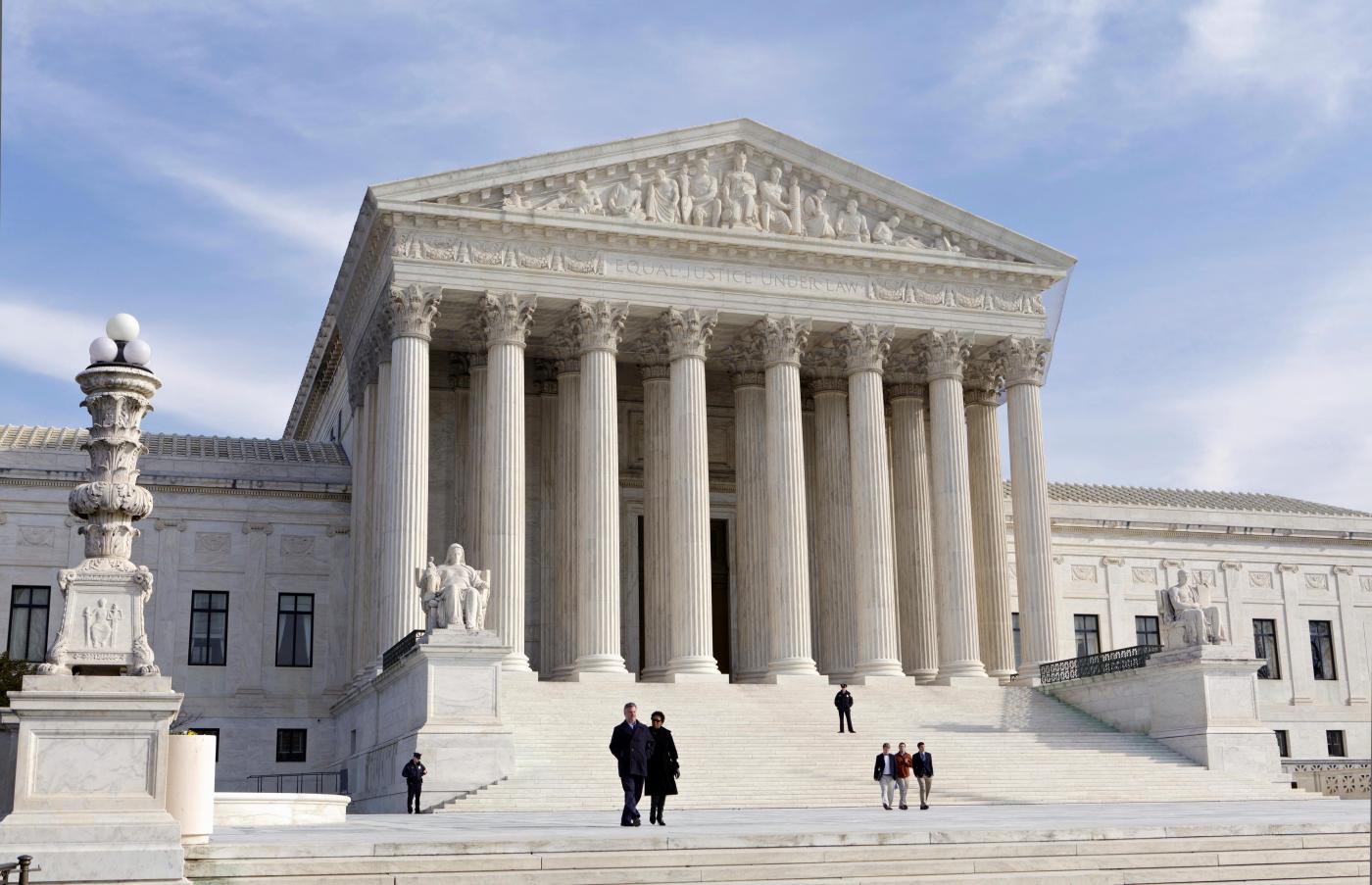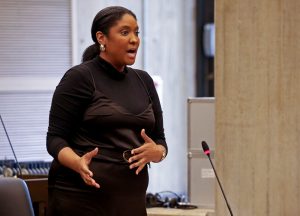
Jesse Wegman: We waited 200 years for this Supreme Court ethics code?
On first impulse, I was tempted to say something nice about the Supreme Court’s first-ever ethics code, which the justices released on Monday after years of pleas from the American public and lawmakers of both parties. But the most striking thing about the code was its resentful tone: call it the condescension of the unelected.
In responding to the widespread outrage that has followed detailed news reports of repeated and egregious ethical violations — most notably by two of its most senior justices, Clarence Thomas and Samuel Alito — the court chose to gaslight the American people, upon whom it depends for its legitimacy.
“The absence of a code,” the court wrote in a sniffy, one-paragraph opening statement, “has led in recent years to the misunderstanding that the justices of this court, unlike all other jurists in this country, regard themselves as unrestricted by any ethics rules.”
As Alito might say, not true. The only misunderstanding here (a willful one, it seems) is on the part of the court. Regular Americans understand perfectly well what’s going on. If they question the justices’ commitment to ethical virtue, it’s because of the justices’ own behavior. The lack of a written code — the actual way in which they are unlike all other judges, who have been subject to such a code for the past 50 years — is merely emblematic of the deeper problem, which is that the Supreme Court considers itself answerable to no one.
Related Articles
Bencivenga, Fugh-Berman: Menopause is not a disability. Why are employers being asked to treat it like one?
Zomorodi, Diaz: Sitting down all day is killing us. The cure is surprisingly simple — and difficult
Letters: Is this parking lot another car accident waiting to happen?
Thomas Friedman: It’s time for a Biden Peace Plan
David French: The new Republican Party isn’t ready for the post-Roe world
Even if it were a popular misunderstanding, why wait until the public is clamoring for action? Any politician will tell you to get ahead of the scandal for precisely this reason; after the fact, it just looks like a sloppy cleanup in Aisle 5. That’s an insult to the hundreds of millions of us who live under the court’s edicts, many of which implicate the most personal aspects of our lives. A tribunal so powerful, one that genuinely cared about protecting and nurturing its fragile authority, would voluntarily and pre-emptively subject itself to the highest ethical standards imaginable.
Not this court. “One of the themes we’ve heard from Chief Justice Roberts and others is essentially this message of: Just trust us. We don’t need to be constrained like everybody else,” Alicia Bannon, director of the judiciary program at the Brennan Center for Justice, told me. “And I don’t think their behavior has earned that trust.”
The sustained public uproar over that behavior — measured most clearly in the court’s record-low approval ratings — appears finally to have pierced the bubble at One First Street. In recent months, Justices Elena Kagan and Amy Coney Barrett have publicly supported the adoption of an ethics code. This rare bout of self-awareness makes the feebleness of the court’s response that much more frustrating. There’s an understandable desire to praise the justices for doing what so many have called for, but my primary reaction on seeing the result is: We waited 200 years for this?
The most glaring defect of the new code is its complete lack of any enforcement power. Its 15 pages are littered with weak verbs like “should,” “should not” and “endeavor to,” which, as any college student on a pre-exam bender will tell you, is a reliable way to sound serious without actually doing the work. And yet the absence of any discipline or enforcement was the central flaw that led to calls for an ethics code in the first place. Whatever the justices do, they must know there will be no professional repercussions. Appointed for life and removable only by impeachment, they are effectively untouchable. It doesn’t matter how virtuous you think you are; in the long term, this brew of power and unaccountability can be corrupting.
What’s included in the code is as troubling as what’s missing. On the matter of outside influences on the justices — the main reason for the current public pressure on the court — the language is almost laughably vague and permissive. “A justice should not allow family, social, political, financial or other relationships to influence official conduct or judgment.” Well, sure. But what in this sentence would have stopped Thomas or Alito from developing their relationships with those uber-wealthy Republican donors who seem so often to come into their orbit, and who by the way happen to be connected to cases before the court?
You can still hang out with all the people trying to influence you, this sentence seems to suggest, just as long as you claim you’re not influenced by them. (As the justices have often done.) Without any enforcement mechanism, or even an impartial body to determine when a relationship (financial or otherwise) has gone too far, it becomes meaningless.
Then there’s the related issue of recusal, which goes to the heart of judicial integrity and has come up repeatedly in matters involving Thomas and Alito. (In addition to the substantial and unreported gifts they received, Thomas refused until very recently to disqualify himself from cases involving the Jan. 6 Capitol attack, even though his wife, Virginia, was deeply involved in the legal efforts to keep former President Donald Trump in office despite his electoral defeat.)
The code purports to lay out a clear recusal standard, but it only muddies the waters. “A justice should disqualify himself or herself in a proceeding in which the justice’s impartiality might reasonably be questioned, that is, where an unbiased and reasonable person who is aware of all relevant circumstances would doubt that the justice could fairly discharge his or her duties.”
There’s a lot going on here, so let’s be good textualists and unpack it.
— “A justice should”:
There’s that squirrelly word “should” again. In fact, we already have a federal recusal law — it applies to the justices, and it uses the word “shall.” Unlike “should,” “shall” is not optional. The justices may enjoy the power to strike down federal laws, but they can’t rewrite them.
— “An unbiased and reasonable person”:
The “reasonable person” standard is a real thing in the law, but how did “unbiased” get in there? It’s not in the law or the federal judicial ethics code. What does it even mean?
— “Aware of all relevant circumstances”:
This phrase appears to be adapted from the lower-court ethics code, but that code includes an important qualifier: “knowledge of all the relevant circumstances disclosed by a reasonable inquiry.” The Supreme Court’s new code omits that last part, putting an impossible burden on anyone who might challenge a justice’s impartiality.
Remember a few months ago, when ProPublica reported that Alito had failed to disclose a free private-plane trip he took in 2008, courtesy of a billionaire who owned a company that later won a multibillion-dollar judgment from the court, with Alito voting in the majority? The justice’s defense, which he offered in an extraordinary opinion essay in The Wall Street Journal, relied on substantially the same language as the court’s new recusal rule. But, as I wondered at the time, how could anyone be “aware of all relevant circumstances” if the justice never disclosed the trip to begin with? What would a “reasonable inquiry” in that case have looked like?
Finally, if there’s a close call in a recusal case, the code offers another ethical off-ramp for the justices: the “duty to sit.” There are only nine of them, the reasoning goes, and they are the highest court in the land. Lower federal judges are replaceable, but Supreme Court justices are not, even if a reasonable person would have a legitimate concern about a justice’s ability to be fair in a given case.
Taken together, Alicia Bannon said, these provisions could have the perverse effect of reducing the ethical obligations not only of the justices but also of the entire federal judiciary. “They’ve essentially taken the position that they’ve already been abiding by these provisions,” she said. Adopting the code in that light “sends the message to the entire judiciary that the Supreme Court’s shoddy ethical record is the floor for everyone.”
The bottom line is the same as it has always been: The Supreme Court cannot police itself. Real policing would require something like an internal ethics office at the court, or perhaps an inspector general for the judicial branch, as Sen. Chuck Grassley, R-Iowa, has long proposed. Either way, a meaningful enforcement mechanism is the only path forward.
“If you’re going to create a code that is clearly responding to current events, you have to have consequences or new structures that will prevent those events from happening again,” said Gabe Roth of the advocacy group Fix the Court.
I really want to be positive about this new code. At the very least, it serves as an acknowledgment that the court is aware of its delicate place within the larger society, and must be responsive to widespread concerns about its integrity. Its publication creates a basic standard against which the justices’ future behavior can be measured. But if the court wants to regain its standing with the American people, it’s going to have to try harder than this.
Jesse Wegman writes for the New York Times.


